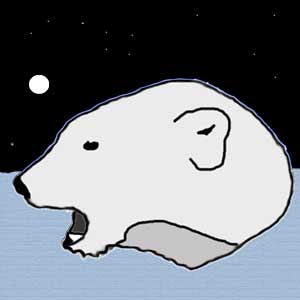Dog Race Ends Minus a Leg

Nunavik's annual Ivakkak dog team race ended today in Salluit. Already over a week late and dogged by adverse weather from the get go in Quaqtaq way back on March 6, it was decided to move the finish line to my home town and eliminate the last portion to Ivujivik.
Although the weather conditions were a relatively balmy minus 17 C, the winds on the ice by the town's shore brought the windchill down well below minus 30 C - so cold I froze my fingers twice while taking pictures. But a large number of people turned out to cheer the tired teams across the tape. The winds were so strong that the lines holding the pennants and community flags were bowed outward dramatically.
The race was won by Peter Keatainak, who has had a virtual lock on the trophy for the past four years, and his younger partner Peter Qisiiq. Both hail from Kangiqsujuaq, and were the odds-on favourites amongst the bookies. Coming in a very close second was 65-year old Tamusi Sivuarapik and his son Johnny, pictured above being hoisted by the crowd atop their qamutik in honour of their accomplishment. The clothing worn by this team is traditional, and in stark contrast to the high-tech garb of "professional" racers in more southern parts of North America and Scandinavia. The leggings, by the way, are made of caribou skins. I've tried them before and found them toasty warm, but the fur sheds like nobody's business.
A couple of dogs were on the limp and had to be brought in by ski-doo, but the thing which struck me the strongest was the placid demeanour of the normally exciteable, and potentially agressive huskies. They let themselves be patted by anyone who wanted to, and seemed to realize their journey was at an end, for this year at least.
Tomorrow night is the awards ceremony at our town hall, and if I know my fellow residents well there will be a square dance afterwards.

Labels: bloody cold, dog sled race Ivakkak


